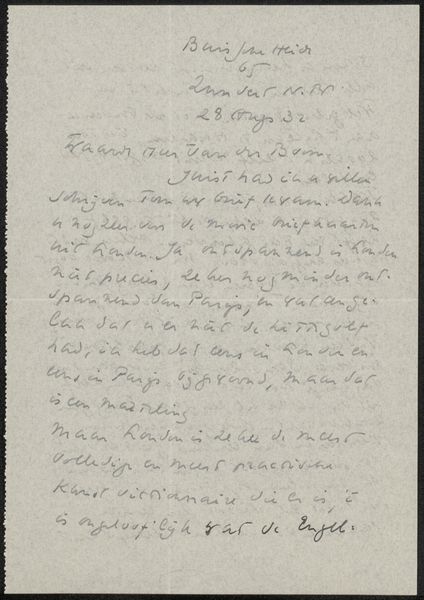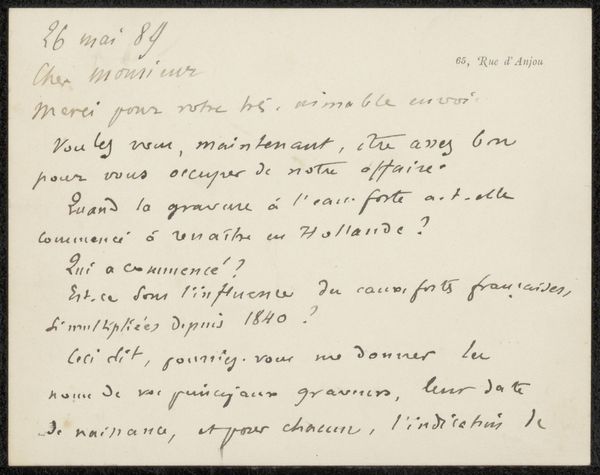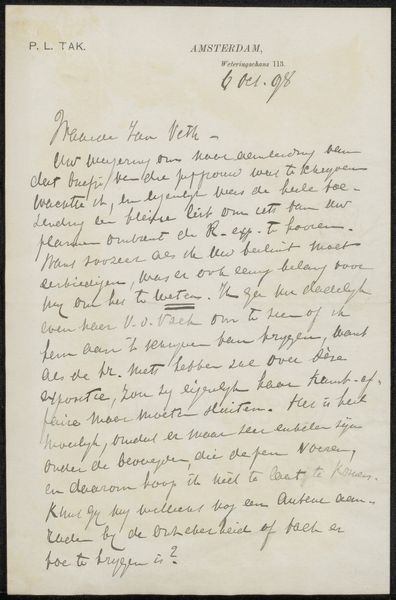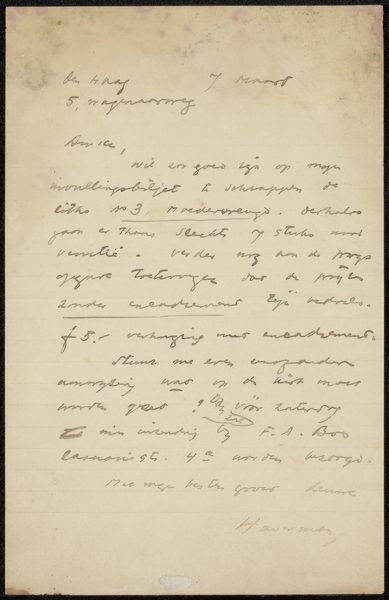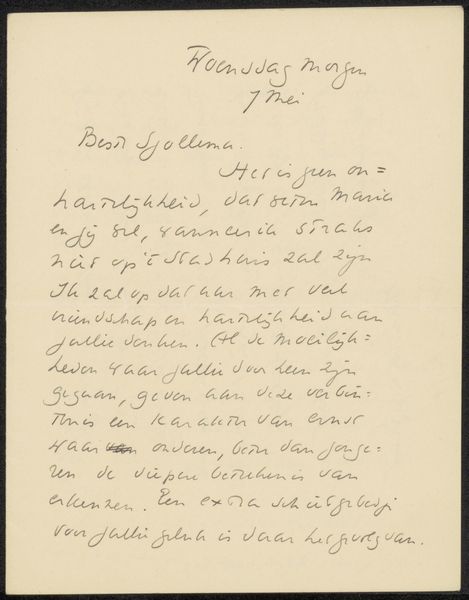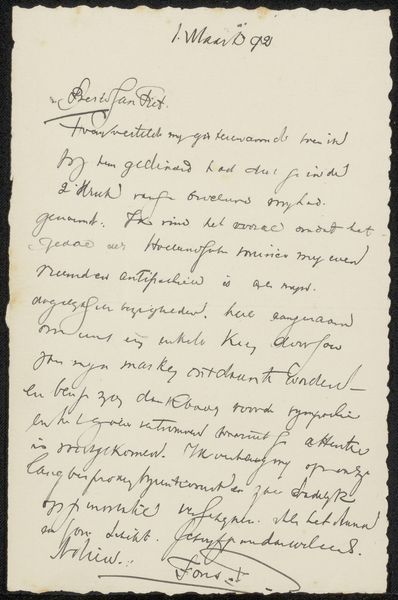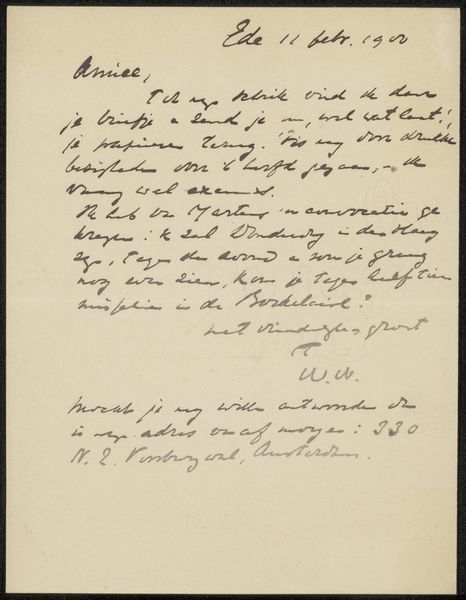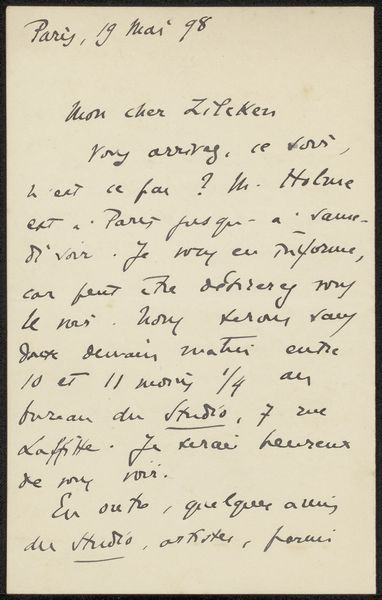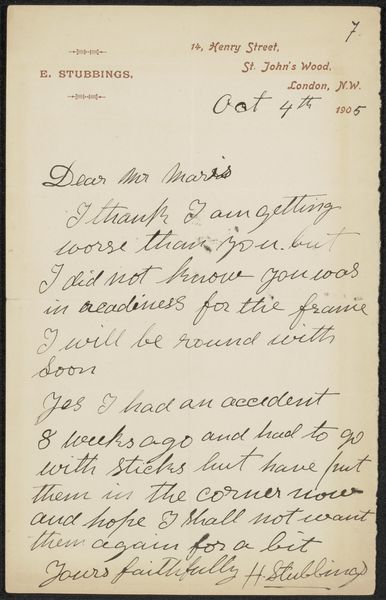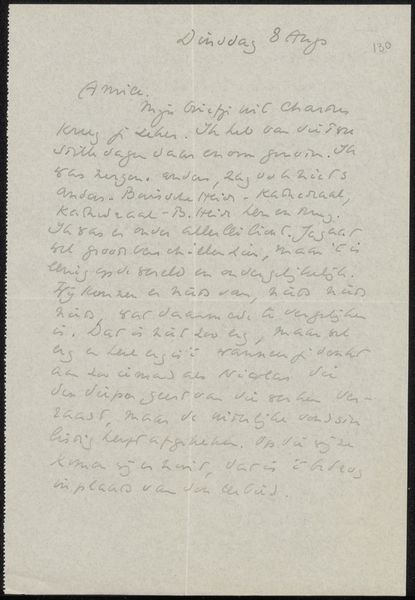
drawing, paper, ink, pen
#
portrait
#
drawing
#
hand-lettering
#
hand drawn type
#
hand lettering
#
paper
#
personal sketchbook
#
ink
#
pen-ink sketch
#
pen
Copyright: Rijks Museum: Open Domain
Curator: Looking at this handwritten note, the "Brief aan Louis Leleu," possibly from 1927, one is immediately struck by the intimacy it conveys. It is composed on paper with ink using a pen, a drawing in essence. The close handwriting fills most of the surface. Editor: The frantic scrawl really gives me the sense of someone deeply preoccupied. This is more than just a message; it's a peek into the social exchanges of its time, perhaps even the emotional state of the sender. It's a rapid script about trivialities; perhaps a message that concerns issues of privilege from its time. Curator: Right. We can analyze it purely in terms of its physical existence: the particular quality of the paper chosen, the flow of the ink from pen to paper, the hand motions involved in the lettering… Editor: And the class implications. The writer has the means to correspond in this manner. Also, we should note, the fact that it is in French presumes a level of education and belonging to a particular social stratum in early 20th century Europe. It highlights who had the power to communicate and participate in cultural dialogues. Curator: The visual impact of hand-lettering shouldn't be dismissed either. Notice the density of the strokes. They aren't uniform; the thickness and darkness of lines respond to changing pressures applied by the hand. Editor: Beyond pure observation, though, consider the recipient. Who was Louis Leleu, and how did such communications construct and reinforce networks of power, cultural capital, and social privilege? The message itself mentions travel, possibly for leisure; suggesting a privileged position, too. This drawing whispers of unspoken socio-economic hierarchies. Curator: I see it speaking about the importance of process, the sheer physical effort that goes into producing an artifact like this. And from the image's perspective, how the ink sits atop the paper, and how its chemical qualities give the work the longevity that it needs in order to still have meaning to a viewer today. It invites you to dwell on its material components. Editor: But the visual details serve something broader, and point toward underlying historical and social contexts. This isn’t just ink on paper, but an insight into gender, identity, and privilege of its time. I imagine Leleu had an important place to fill among its community's members. Curator: I’ve never thought of it like that. I was so focused on its form. Editor: Maybe by considering this pen-and-ink sketch from a perspective of privilege, it pushes us to consider our own position within a larger landscape of access, identity, and social narratives that continue to shape how art is made and viewed.
Comments
No comments
Be the first to comment and join the conversation on the ultimate creative platform.
